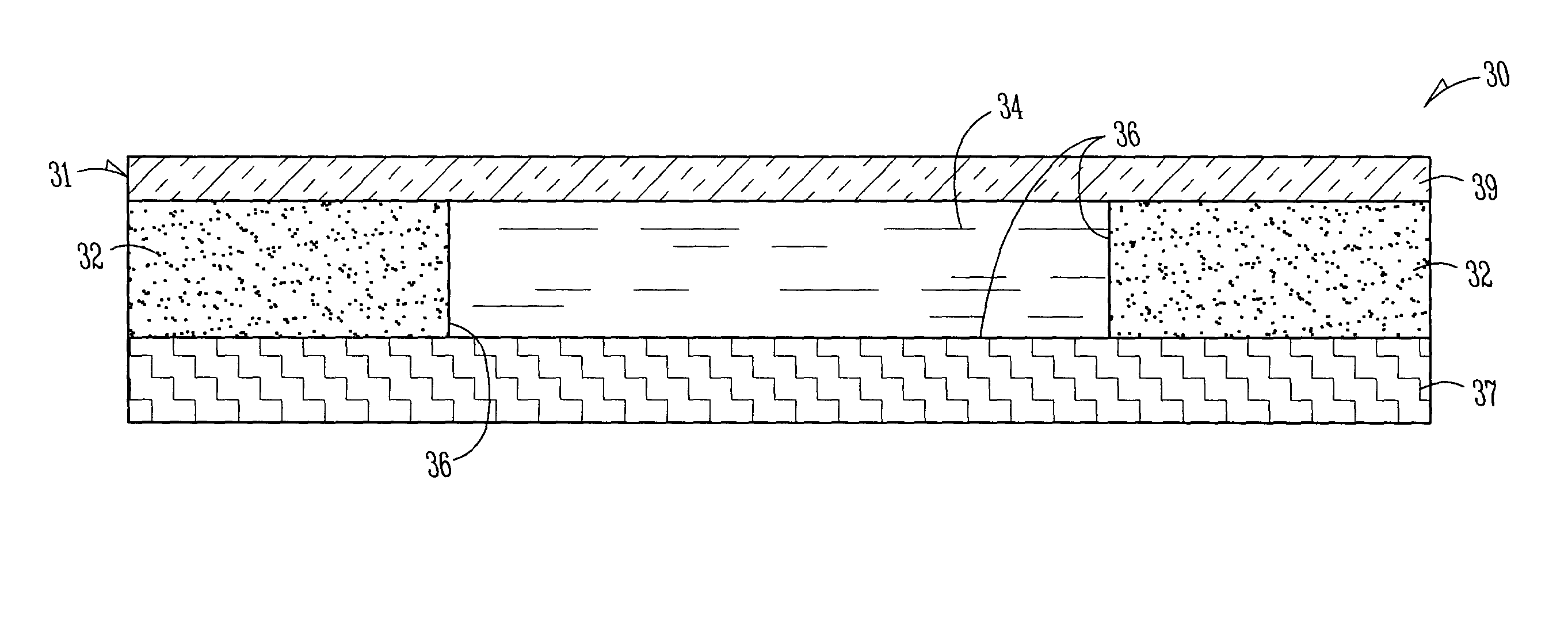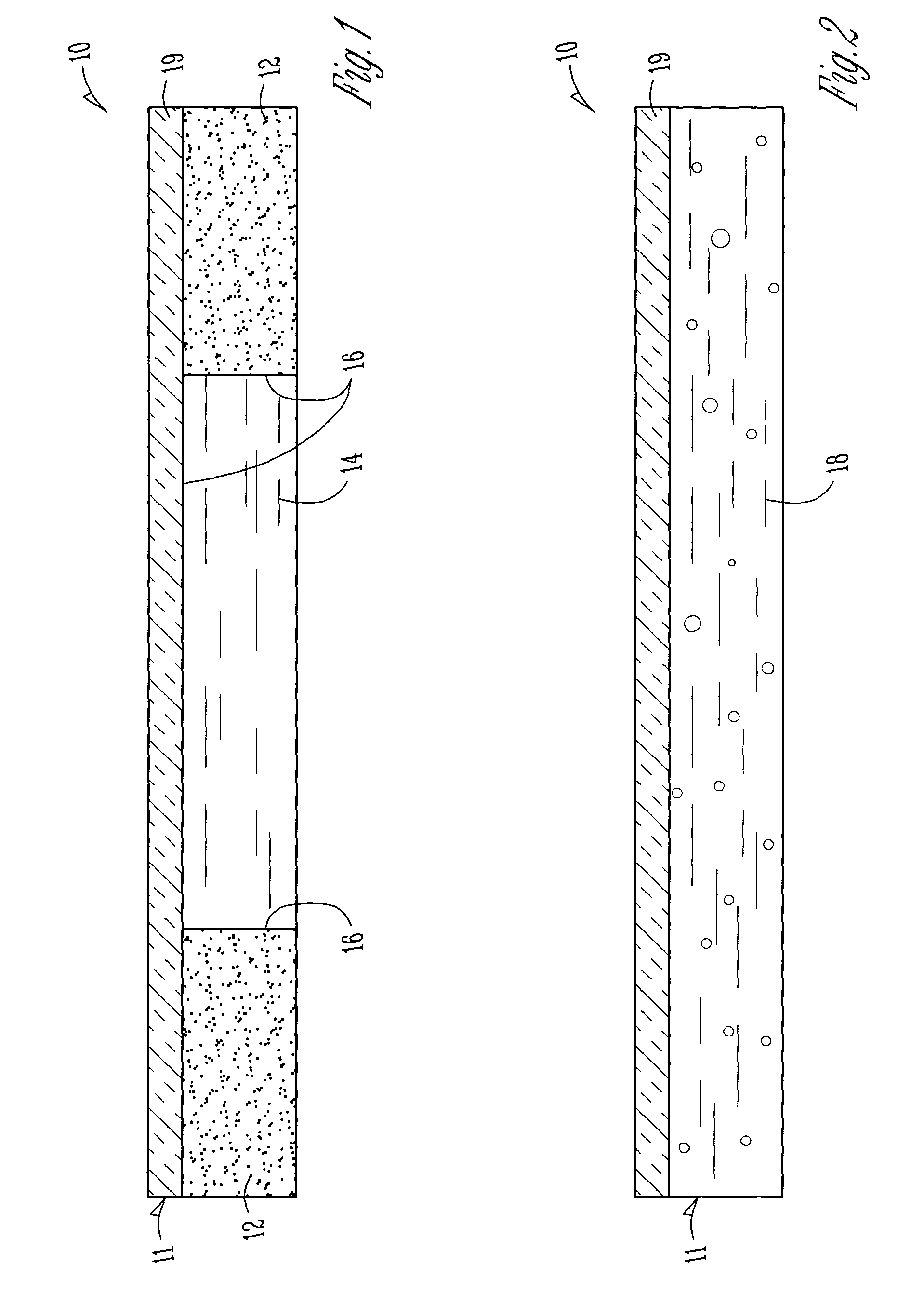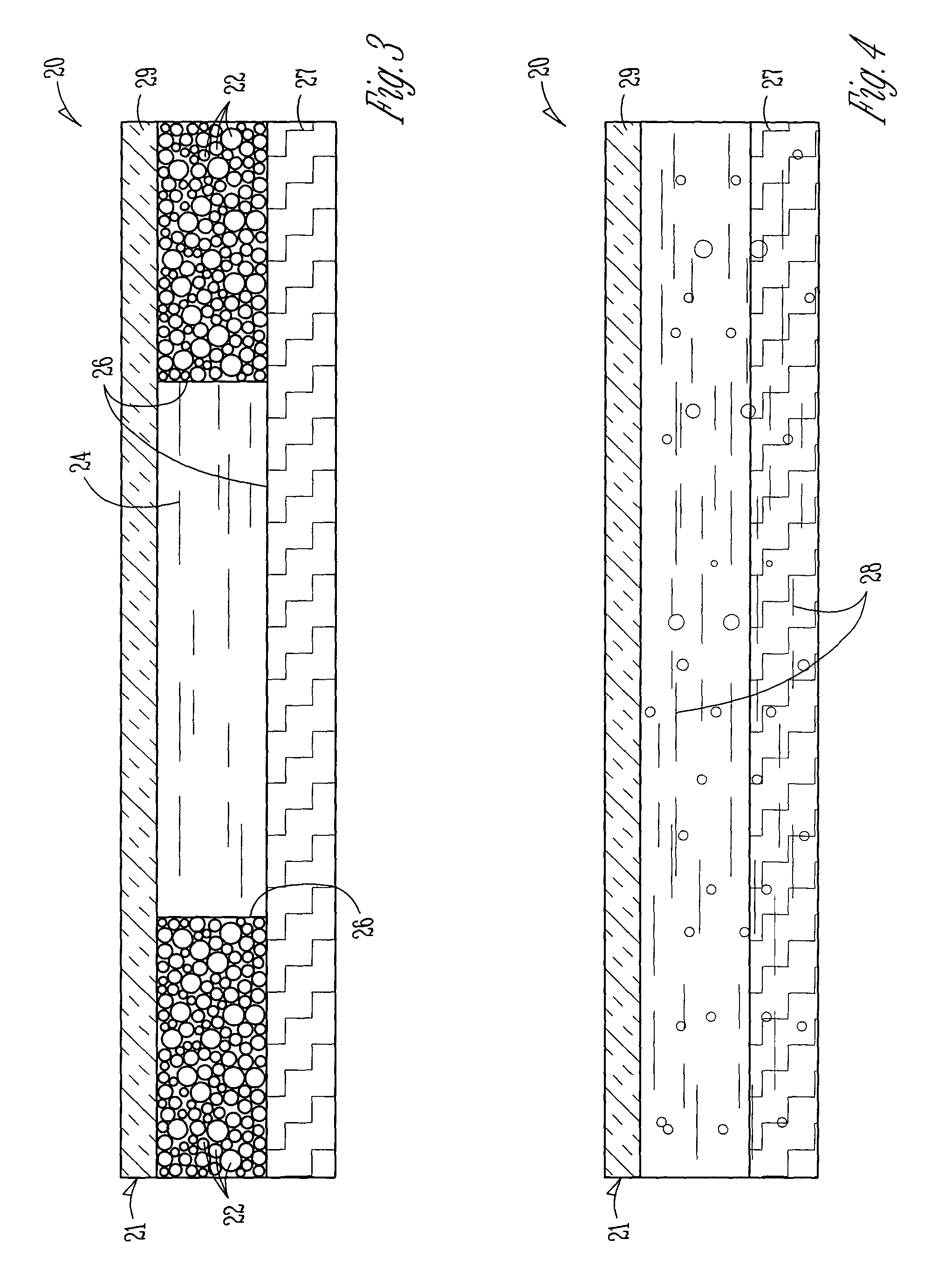Cold pack
a technology of cold packs and ice packs, applied in the field of cold packs, can solve the problems of insufficient dissolution, inability to perform cooling, and inability to effectively dissolve ice, and achieve the effect of uniform cooling temperature and efficient distribution
- Summary
- Abstract
- Description
- Claims
- Application Information
AI Technical Summary
Benefits of technology
Problems solved by technology
Method used
Image
Examples
Embodiment Construction
[0025] In the following detailed description, reference is made to the accompanying drawings, which show specific embodiments in which the invention may be practiced. These embodiments are described in sufficient detail to enable those skilled in the art to practice the invention. It is to be understood that other embodiments may be utilized and structural changes made, such that the following detailed description is not to be taken in a limiting sense.
[0026]FIGS. 1 and 2 illustrate a cold pack 10. The cold pack 10 includes an enclosure 11 with a powdered solute 12 and a liquid 14 sealed inside the enclosure 11. The powdered solute 12 and the liquid 14 are segregated within the enclosure 11 by a membrane 16 (see FIG. 1). Rupturing the membrane 16, such as by applying pressure to the enclosure 11, mixes the liquid 14 (e.g., water) with the powdered solute 12 to produce an endothermic solution 18 within the enclosure 11 (see FIG. 2). Substantially all of the powdered solute 12 rapidl...
PUM
 Login to View More
Login to View More Abstract
Description
Claims
Application Information
 Login to View More
Login to View More - R&D
- Intellectual Property
- Life Sciences
- Materials
- Tech Scout
- Unparalleled Data Quality
- Higher Quality Content
- 60% Fewer Hallucinations
Browse by: Latest US Patents, China's latest patents, Technical Efficacy Thesaurus, Application Domain, Technology Topic, Popular Technical Reports.
© 2025 PatSnap. All rights reserved.Legal|Privacy policy|Modern Slavery Act Transparency Statement|Sitemap|About US| Contact US: help@patsnap.com



